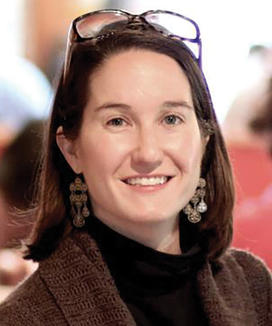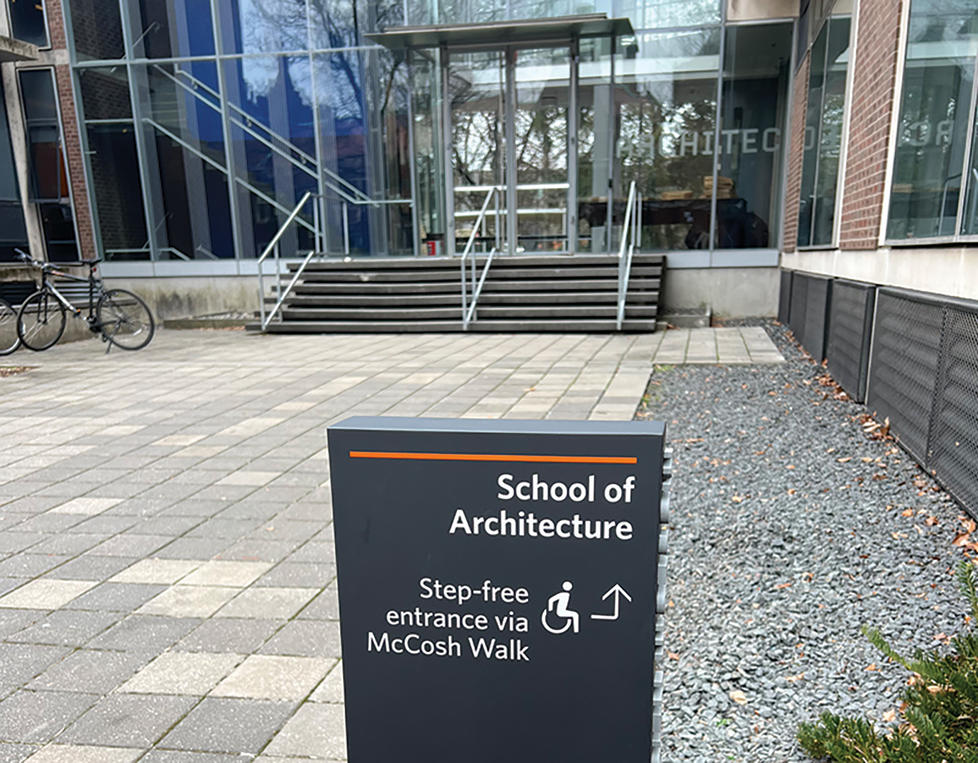Class Close-Up: Experiencing the Inaccessible Spots on Campus
Lecturer Erin Raffety *15 is teaching a writing seminar called Disability Justice
Disability Justice, a spring semester course taught by lecturer Erin Raffety *15, may be a writing seminar, but Raffety, who received her Ph.D. in cultural anthropology from Princeton, firmly believes the topic can’t be taught in a classroom.
“You have to get out and move around and experience the environment,” she said.

For the past few semesters, Michael Barnes, the University’s inaugural director of accessibility, has led a walking tour of campus for Raffety’s class where he points out accessibility improvements, like the elevator addition to Nassau Hall that aesthetically matches the rest of the ancient building, but also potholes, crumbling sidewalks, and a chair lift in Dickinson Hall, complete with flashing lights, that takes seven minutes to travel from the top to the bottom floor.
“It’s that dance between the need for full accessibility, but also the equity of … experiencing these beautiful, older buildings,” Barnes said. “So, how can we creatively make these [buildings] accessible while maintaining the ethos and the historical nature to the University?”
While the Princeton community wrestles with that, students in Raffety’s course are also delving into their own questions; for one assignment, students must write a persuasive paper about accessibility issues on campus or the accommodations process.
Inwoo Shin ’26, who took the course in the fall of 2022, wrote about how Princeton’s policies are often written by administrators and enacted by faculty, not necessarily those who identify as disabled, so she believes implementation can be “really flawed by those skewed perspectives.”
Several students told PAW the course has opened their eyes to accessibility issues they hadn’t been aware of previously. “We are so caught up in the world, in our own reality, that we kind of fail to think about others,” said Madeline Miao ’27, who is currently taking the course.
Yacoub Kahkajian ’26, who identifies as having a disability, said it’s helped him understand that the medical aspects of disabilities often take precedence over other considerations, like social life, which “helped me see why I’ve always felt like I wasn’t really getting the same advantages as other people.”
Nico Del Pino ’27, who took the class last fall, realized that physical signs of accessibility, like accessible entrance signs, actually highlight the majority of areas that are inaccessible. He said society as a whole “could just as easily have designed a world where there were no stairs, so people with mobility issues in that imaginary fantasy land would not be considered disabled because they would be able to get everywhere. And that’s really just the tip of the iceberg.”
Accessibility Initiatives
The University’s wayfinding app and facilities website will soon include detailed accessibility guides for all 212 campus buildings and more than 900 individual teaching spaces after the University conducted the most comprehensive accessibility survey of campus to date last fall in partnership with AccessAble, an accessibility information provider based in England. The guides will include detailed information such as turning radii for wheelchairs and availability of ADA seating. According to Barnes, Princeton will be the first higher education institution in the nation to have such comprehensive access guides. The University will continue to work with AccessAble as new buildings open.
In addition, since the University’s Allies for Access program launched in January 2023, more than 145 staff, faculty, and students have undergone training to serve as allies to the disabled, according to Asha Nambiar, director of accessibility and disability services. The program aims to empower the community “to serve as ambassadors for access on campus through … a foundational understanding of disability and what it means to be an ally,” according to Princeton’s most recent DEI report. The next training will take place this summer.












No responses yet